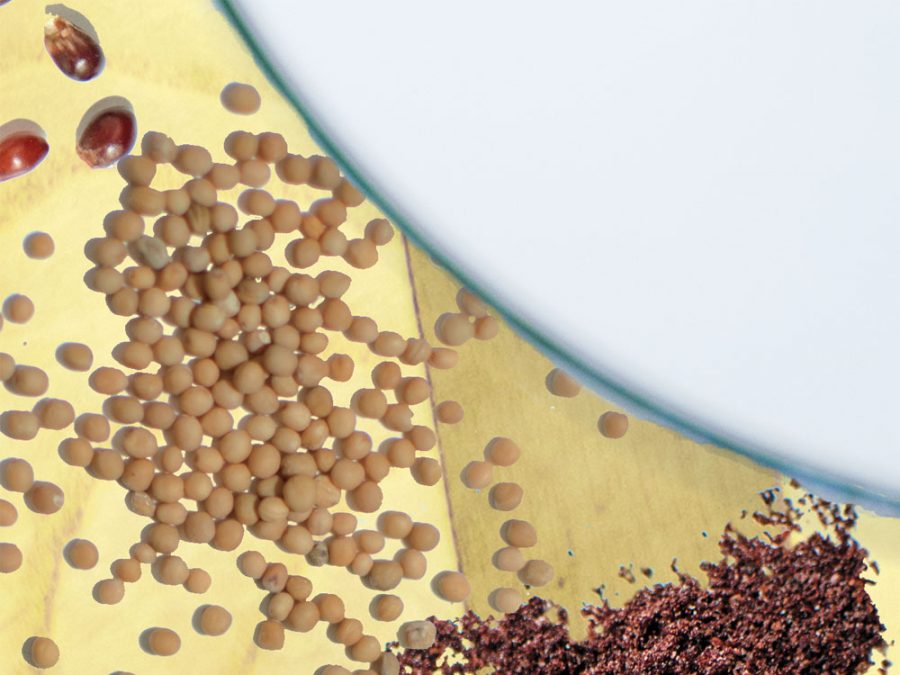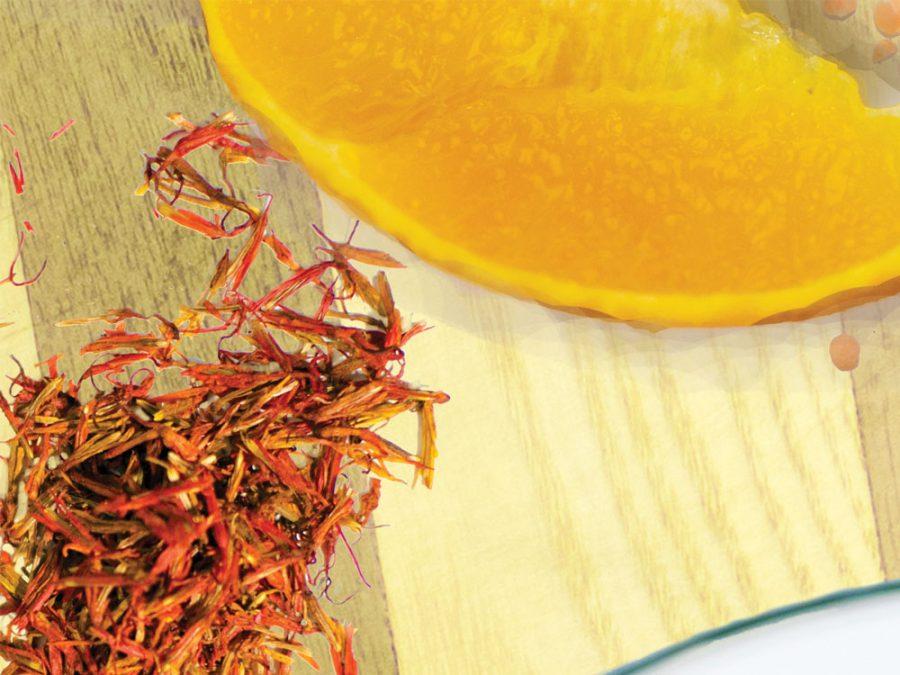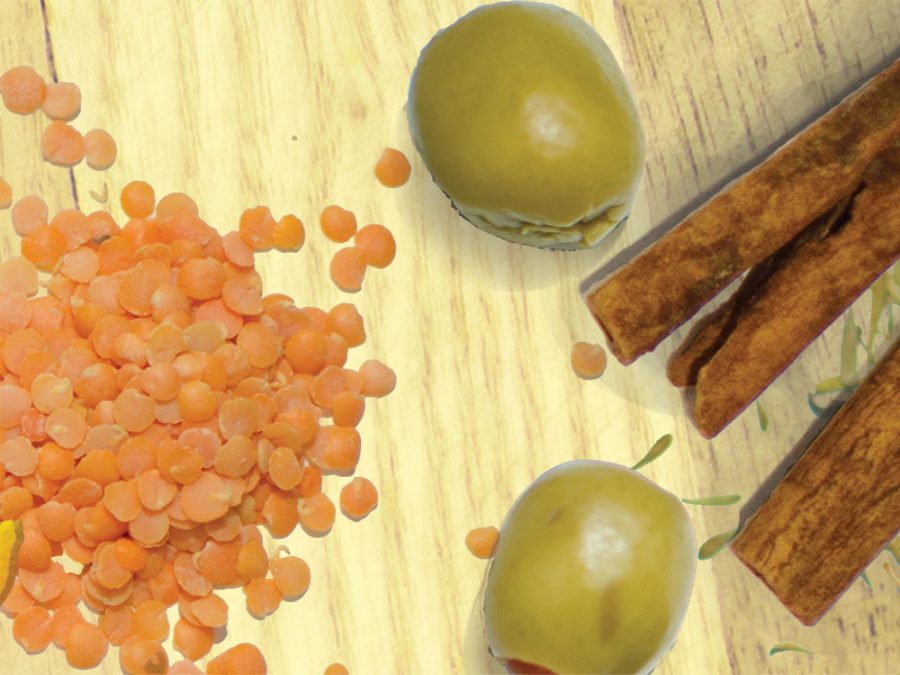Burnt fingers, charred dinners, undercooked chicken and dirty dishes. Food is a necessity. The carbohydrates give energy and the proteins yield strength. Throughout history, food found its way to not only keep people alive, but also to preserve values of that time.
Early Europeans conserved meat using salt and ate it daily, but only allowed upper class citizens to have the freshest meals. In ancient China, food showed social status in households, with the men eating first and the women getting leftovers. In the 21st Century, millennials use food to unite under a common interest and engage all of their senses revolving around cuisine.
Instagram food videos and certain salt-flicking memes only add lighter fluid to the charcoal of food obsessed individuals. Although senior Jack Widhalm doesn’t identify himself as obsessed, he occasionally finds himself spending time scrolling through “foodie” accounts.
“I like watching the videos on Instagram of food,” Widhalm said. “The food looks really good and sometimes it helps me out with some ideas of ways to make something.”
Widhalm doesn’t often cook extravagant dinners but instead small meals for himself. He’s prepared homemade macaroni and cheese, cookies and helped his mom in the kitchen on more than one occasion.
“I was in the kitchen with my mom ever since [I was] about eight years old,” Widhalm said. “Cooking is another common interest we have together.”
“Social media has increased people’s awareness of different diets and food trends. Sometimes in a positive way [such as] someone sharing a story about losing weight from eating healthy and exercising,” Kemp said
Although he said he doesn’t make anything very interesting, Widhalm follows what his mom cooks and tweaks things to his own liking. Just as he uses his mother for a model, he uses food accounts on instagram such as foodintheair and foodyfetish to find new recipes to try out.
“[The videos have] helped me be more creative as both a person and as a cook,” Widhalm said. “They have also helped me be more open to doing new things with an open mind.”
Widhalm uses social media to find ways to make eating healthy interesting, which overall has a positive impact on his lifestyle. For others, however, social media can be detrimental because of bad influences online, said dietician Megan Kemp. Furthermore, comparisons made between users can code for more bad eating habits.
“Social media has increased people’s awareness of different diets and food trends. Sometimes in a positive way [such as] someone sharing a story about losing weight from eating healthy and exercising,” Kemp said, “sometimes in a negative way from stories of losing weight from fad diets which usually limit entire food groups or macronutrients. I more often see the negative stories over the positive in my own newsfeed. I think this is because those stories seem more intriguing and use eye-catching phrases to capture the reader’s attention.”
While Instagram accounts dedicated to food may inspire Widhalm to try out the recipes and regulate his diet to be healthier, for others it’s just another drop in the bucket in the pool of Instagram videos. Senior ChungHyun Lee doesn’t follow the accounts but sees them occasionally on the Instagram explore page. Lee watches the various recipes in the form of short videos, and the recipes make him want to learn culinary arts. Most of his creativity, however, comes from his culture and the various countries he’s visited.
“Korea and China have their own fusion of international cuisine, so Italian, French or American food in those countries taste different from what you would get here,” Lee said. “Even a cheeseburger from McDonald’s tastes different and they also have local manus such as Korean BBQ burger.”
“I have tasted authentic foods from various countries that most people would not get to experience,” Lee said. “My culture definitely plays a role in my taste. Because I’ve grown up with Korean food, I have a liking for spicy foods.”
Lee lived in Korea and China and currently resides in the United States, so he is able to compare what American food he’s tasting to that of around the world. Lee describes the United States’ food style to be a mix of everything, though what he finds the most interesting about the foods he’s tasted is how they’re all unique.
“Korea and China have their own fusion of international cuisine, so Italian, French or American food in those countries taste different from what you would get here,” Lee said. “Even a cheeseburger from McDonald’s tastes different and they also have local manus such as Korean BBQ burger.”
When he moved, Lee brought back some of the culture into his U.S. kitchen. At home, Lee’s family still cooks the food they eat like how it would be made in Korea. Traditional foods from other countries brought into the United States are common, according to author Amy S. Choi in a TED talk article, which is how the country gets the name “melting pot of cultures.” When people of different ethnicities bring dishes and recipes into the United States, current citizens seize the opportunity to try the new food and incorporate it into their lifestyle.
“When my friends come over, they taste my mom’s cooking and they all genuinely love it,” Lee said. “My mom also packs my lunch sometimes and my friends get jealous of the foods I bring. There’s been very few days that I’ve not shared my lunch with someone.”
Just as Lee’s family brought cuisine with them when they moved to the United States, sophomore Peyton Moore’s dad brought his cooking values into their home but from Texas instead of Asia. Moore finds she has a distinct liking for spicy food because of her dad’s Texas upbringing, and it has become a staple in her household.
“The cooking that’s done in Texas is different from the cooking that’s done in Missouri,” Moore said. “There’s more spices and flavor to the food and since [Texas is] where my dad comes from that’s how most of my food is.”
Even with Texas classics served at home, Moore still has to eat according to her athletic lifestyle. As a competitive volleyball player both inside and outside of RBHS, Moore must eat enough to be able to keep up with her constant movement.
“I eat in moderation which most people don’t believe, but I eat in proportion to how much I play volleyball so it balances out,” Moore said. “People don’t think I eat in moderation because I eat a lot of food that’s usually unhealthy and most people think I’m always eating.”
“If you engage in physical activity, healthy eating can help you perform at your best. You need to eat the right amount of calories- you also need to eat the right kinds of calories,” Kemp said. “Focus on lean protein foods and complex carbohydrates (foods that contain fiber- whole wheat pastas, quinoa, oats, etc). If you do not consume enough calories, you may have decreased energy so you can’t give 100 percent.”
Nutrition can help with an athletic performance can provide athletes with the extra boost of energy they need to perform well during a game or competition and keep them from performing poorly. Carbohydrates provide the player with enough glucose to keep them at the top of their game, and protein from lean meats or yogurt allows the body to build muscle.Just as a car can’t run without gas, athletes can’t perform well without sustainable food. Dietician Megan Kemp notes athletes do need to eat to balance out their activities; however, the food they’re eating should not just be empty calories.
“If you engage in physical activity, healthy eating can help you perform at your best. You need to eat the right amount of calories- you also need to eat the right kinds of calories,” Kemp said. “Focus on lean protein foods and complex carbohydrates (foods that contain fiber- whole wheat pastas, quinoa, oats, etc). If you do not consume enough calories, you may have decreased energy so you can’t give 100 percent.”
Because of the new age of food obsession, companies are taking to the media to promote their restaurants. The Infatuation, a restaurant review site and Devour Power, a food publicity business, both use social media outlets such as Snapchat to keep up with the food market. With a simple post on an Instagram account publicizing a restaurant to 190,000 people right away, accounts such as NoLeftovers find an ability to make money simply by having a huge following according to Adweek, a news site.
With strong finances and a hefty market, social media sites are able to inspire followers to go to different restaurants or diners and even try out new recipes.
“Instagram accounts open my eyes to food that I otherwise wouldn’t try,” Widhalm said. “It’s definitely made me try things I did not necessarily want to, [like] oysters and brussels sprouts.”
What are your favorite food accounts on Instagram? Leave a comment below.





























































































